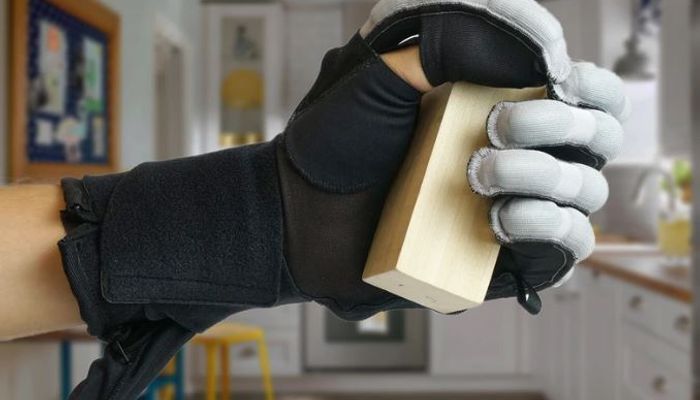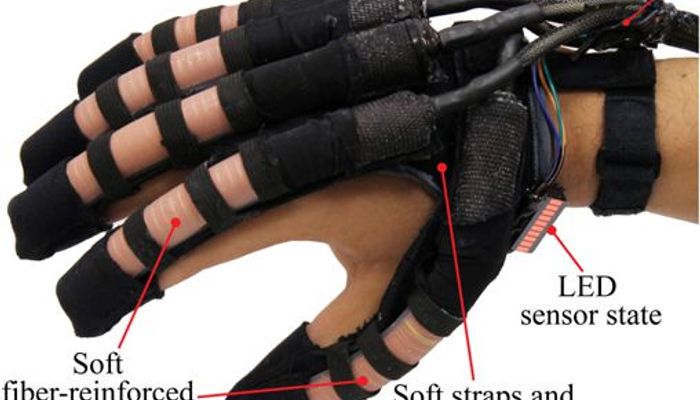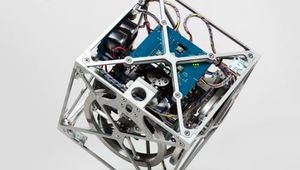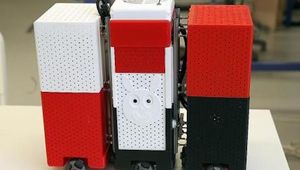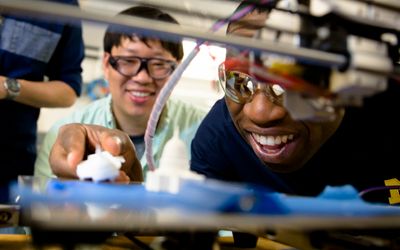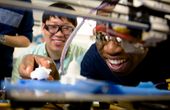Soft Robotic Glove
A robotics glove designed for at-home Neuromuscular Rehabilitation
Technical Specifications
| Characteristic | |
| Weight of glove | |
| Waist pack weight | |
| Profile of glove | |
| Glove size | |
| Degrees of freedom (DOF) | |
| DOF for thumb | |
| Bending angle (thumb) | |
| Bending angle (middle) | |
| Speed of actuation (closed loop bandwidth) | |
| Force range | |
| Hours of autonomy | |
| Controller frequency |
Overview
Clinical studies have shown that repetitive hand exercise results in significant improvements in gaining back hand motor functions from neurological conditions like a chronic stroke with hemiparesis or spinal cord related injuries. Repetitive task practice is a form of rehabilitation that targets individual movements that will improve hand accuracy, strength, and range of motion. Guiding these exercises usually requires assistance from a physical therapist which is often labor-intensive, costly, and slow. Having a portable device where patients can do hand exercises on their own decreases the friction in therapy sessions, increases accessibility, and potentially drive better and faster results.
The robotic glove is made by using soft pressurizable elastomeric actuators that support finger flexion or extension. This design provides more degrees of freedom and range of motion controlled by a single fluid pressurization input. The soft robotic gloves are designed to be comfortable with the use of soft fabric and elastomer materials with fiber reinforcement. It is safe, portable, and inexpensive due to low component cost and a single hydraulic actuation mechanism.
System requirements
Hand device practical considerations
In designing the hand device, the weight and comfort of the system must be taken into consideration. It is determined that devices mounted on the hand must not weigh over 0.5kg. Any additional components for power, actuation, and control must be limited at 3kg to be considered portable. The package is can be placed on a tabletop or can be attached to a wheelchair. The size of the hand device is also designed to fit different hand sizes with the ease of putting on and removing off the hand when necessary.

Motion and force requirements
The soft robotic glove must be able to generate enough force in order to support movement and hand flexion that follows the fingers’ natural range of motion and extension comfortably. In order to establish a benchmark on the range of motion of the developed prototype, a hand study has been conducted with a healthy person’s hands. An electromagnet tracking sensor system was used to determine the sum of joint angles in the range of motion. Besides the range of motion, data from previous studies identified a healthy person’s grip at 300 to 450N maximum in females and males respectively.
Soft and multi-segment actuators
The actuators used in the robotic glove are tubular structures made of composite material with fiber reinforcement. The actuator is cured using a 3D printed mold, then added with a strain limiting material. Radial reinforcements are then placed before placing it finally on another mold to wrap the actuator in a thin rubber layer. The hydraulic actuators are mechanically programmed to match the range of motion of an individual finger when pressurized by placing motion sensors and have low impedance when not actuated.

Exploded and assembled view of soft actuator components of the inactive and active states. A. Soft bending actuator. B. Bend-twist soft actuator. C. Linearly extending soft actuator. D. Twisting soft actuator.
The actuators are placed in the dorsal part of the hand giving an open palm interface for the user in interacting with objects and the surroundings. The device is packaged into a portable autonomous waist belt pack where the 14.8 lithium polymer batteries, solenoid valves and tubing, pump reservoir, and microcontroller boards are placed. The battery source of the device is capable of powering up the robotic gloves up to 3.8 hours of operation in a single charge.
The multi-segment soft actuators are those that combine separate bending and extending sections on one actuator. These actuators in the index, middle, ring, and small finger contain the multiple programmable motions in series along with the actuator’s length.

Schematic diagram outlining some stages of the soft fiber-reinforced actuator fabrication process. A. In the first molding step, the actuator is molded using 3D printed parts. B. The strain limiting layer is attached to the flat face of the actuator. C. Fiber reinforcing thread is wound along the length of the actuator. D. In the second molding step, the entire actuator is encapsulated in a layer of silicone to anchor all reinforcements. E. The steel rod is removed and both ends of the actuator are capped allowing one end to have a port for the inflow/outflow of fluid.
Evaluation
Range of motion evaluation
In order to test the efficiency of the robotic glove, rehabilitation exercises involved in conducting precise motions in activities involved daily living are tested. It is also tested to manipulate objects of different shapes and sizes. Gross and fine functional grasping of the glove were evaluated qualitatively first on healthy individuals through demonstrations in both how they interact on typical objects and in free-space.
Controller Evaluation
The controller is evaluated by testing the valve commands response or delay to actual valve action using a sinusoidal tracking performance tester. It is found that the time delay in reaching the set reference pressure is mainly a result of internal fluidic friction with the tubing.
Conclusion
More work is required in order to improve the results and performance of the robotic glove. It can be implemented by thinning out the profile of the glove, thereby decreasing the size of the multi-segmented fiber-reinforced actuators. This improvement can provide increased force generation. It will help in achieving the goal of rehabilitating more hand pathologies in different scenarios where the fingers are showing varied stiffness. The robustness and life cycle of the glove will also require further fatigue testing and investigation.
More tests are required in order to design the robotic assistive glove in order to give a customized solution for each patient, effectively targeting specific pathologies for each individual and understanding the right control strategies that will work.
References
Describes the soft actuator design and fabrication used to mechanically program desired hand range of motions. Also discusses the hand motion study to conform and match actuators to fingers joint motions.

